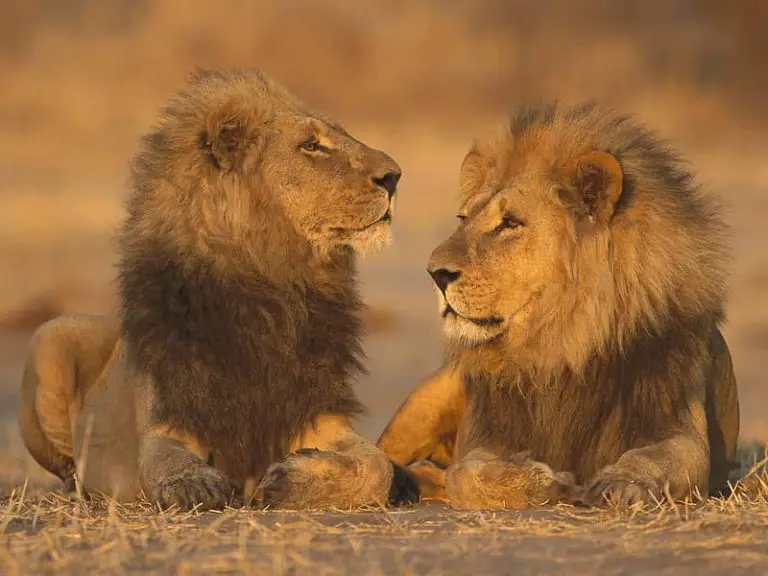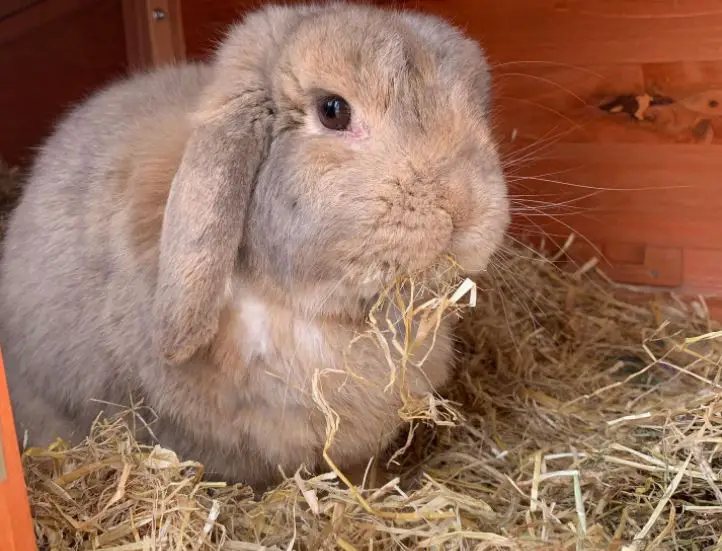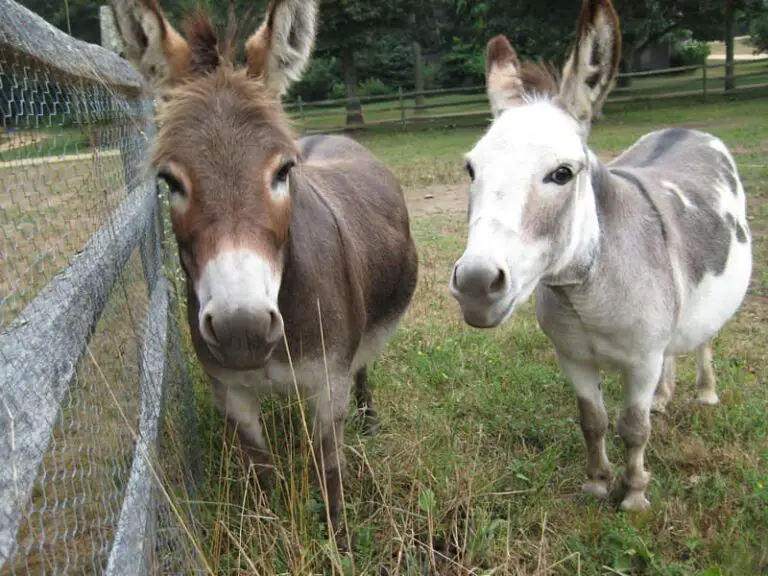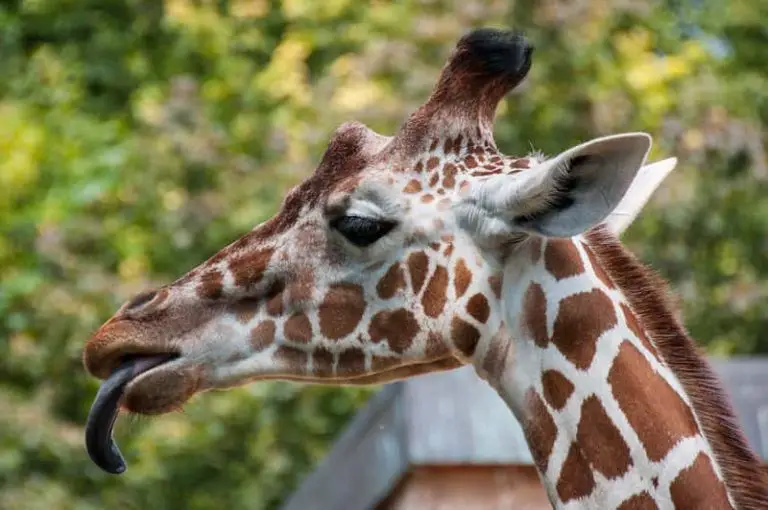Can Rabbits Eat Rice Hay? (Precautions and Tips)

Rice straw hay is very poor from a nutritional point of view. It has very low crude protein and metabolizable energy values and high levels of fiber.
These protein levels, added to the high fiber values, do not allow efficient use of hay and reduce consumption. Therefore, in case this type of hay is to be fed to the rabbit, it is necessary to balance the diet with protein pellets and/or grains.
It is well known that hay is the basis of a rabbit’s diet, but there are different kinds of hay and not all are equally nutritious.
Rice hay, being a very abundant by-product of agriculture, could be very accessible and economical, but in spite of not being toxic, it is not recommended as food due to its nutritional deficiencies.
Rabbits can eat rice hay, but it is not recommended to give it as a base feed, the low amount of vitamins and minerals and also low digestibility make rice hay a very poor feed, which should be used as a complement to other more nutritious feeds.
In fact, the nutritional values of rice straw are so low that some farms have recorded daily losses of up to 120 grams of weight when supplementing this feed to young animals.
Main rice hay deficiencies
The appearance of rice straw at first glance is that of a yellow, dry food, rice hay is low in protein and minerals but high in fiber.
The fact that it has a high fiber content is not positive from a nutritional point of view, but it also contains a high silica content, which negatively affects the digestibility of the straw.
Rice hay is very deficient in macrominerals such as phosphorus, calcium and sodium, which are essential for the development of the rabbit.
There is also a great deficiency of vitamin A, which helps the development of healthy teeth and the development of bone and soft tissues.
In summary, the 4 main deficiencies of rice straw as feed are as follows:
- High fiber
- High silica
- Low digestibility
- Low amount of minerals and vitamin A
Rice hay comparison table
| Grass hay | Rice Straw | Straw Cereals | |
| Crude Protein | 8-14 | 3.2-4.6 | 4-5 |
| Fiber | 60-70 | 68-83 | 73-80 |
| Lignin | 2-6 | 3.2-4.4 | 7-14 |
| Ashes | 7-9 | 16-18 | 6-8 |
| Digestibility | 50-60 | 37-53 | 40-52 |
How to prepare rice hay for rabbits?
After having seen the nutritional deficiencies of rice hay, there is still the possibility of feeding it, because as I mentioned previously it is not toxic at all.
There are various methods in how rice hay can be fed to a rabbit, one of the most practical and obvious being to mix it with other foods.
But here I will give you some other ideas, one of the most used ways to feed rice hay is to grind it through mechanical mechanisms.
This may be an extra chore and incur a little more expensive, but grinding the rice hay makes it more digestible and/or easier to mix.
A technique widely used by farmers who feed their animals with rice hay is ammonification, which consists of mixing the hay with urea dissolved in 30 kilos of water and then leaving the mixture covered for 20 days.
This degrades the rice hay fiber making it much more digestible for any animal, also its protein level increases by 100%.
The ammonium used in this mixture prevents the development of fungi.
It is a whole process, but in case you decide to feed your rabbit with rice hay you can think of any of these options, being perhaps the most practical one to grind it and balance it with other foods.
Caution in feeding carbohydrates to rabbits
While researching the subject, I read about some opinions warning about the presence of carbohydrates in rabbits’ food.
For different reasons, this can result in complications.
The two most important carbohydrates in the rabbit diet are mainly starch and cellulose. Both are made up of glucose (a kind of sugar), the simplest carbohydrate.
The starch is found in grains and tubers (potato, cassava, etc.) and is the main source of energy for non-ruminant animals.
Cellulose is the structural component of plants, especially fiber. No animal is able to produce the enzyme needed to digest cellulose, so it has to rely on the action of bacteria in the digestive tract.
Ruminants are the most efficient animals in the digestion of cellulose since they have a population of bacteria in the rumen capable of acting on cellulose, but to a lesser extent.
The main function of carbohydrates is the production of energy. These are digested in the small intestine by the action of a specific enzyme (amylase), secreted by the pancreas.
Because the passage of food through the small intestine is fast, a large number of carbohydrates can reach the cecum and be fermented by bacteria.
This large amount of carbohydrates can cause a disproportionate growth of bacteria, whose production of toxins can cause serious complications to the affected animal.
Rabbit’s efficiency in digesting fiber
Fiber digestibility in rabbits (e.g., alfalfa hay) is about only 14 percent. In comparison to that of the ruminants, which is 45 percent.
Despite having poor digestibility of fibrous feeds, rabbits efficiently extract the protein found in these feeds.
The reason is that they efficiently digest the non-fibrous part, such as proteins and soluble carbohydrates, and skim the fibrous part.
This is why the fact that a rabbit can be fed rice fiber will not be detrimental to it, but neither will it obtain great nutritional benefits despite its efficient digestive system.







